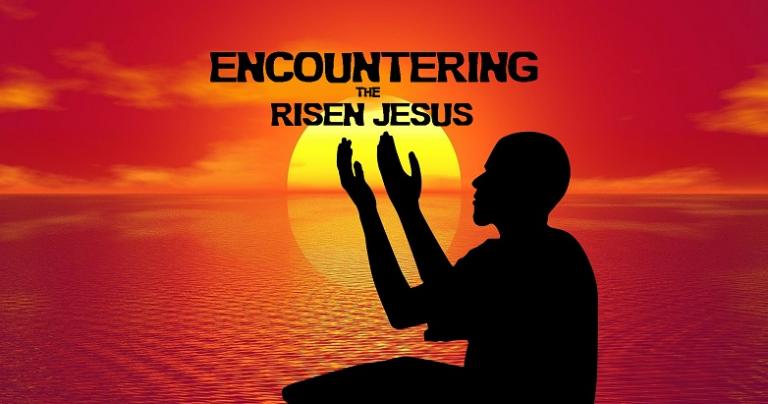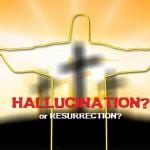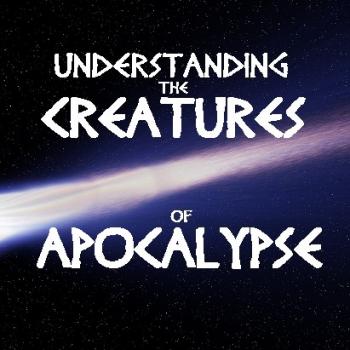
Encountering Jesus risen and alive can be both an experience with someone very real and take place in an altered state of consciousness.
Encountering Jesus raised and transformed by God after death is the heart of the Easter kerygma (1 Corinthians 15:3b-5). Last time we discussed failed attempts to explain away New Testament accounts of people encountering the risen Jesus as hallucinations and psychosis. But I should add that affirming the historicity of the resurrection in a naively realist or fundamentalistic way is also incorrect. Explore this in the video presentation here:
Beyond Objective & Subjective
When it comes to the resurrection of Jesus, scholars like Fr. Roch Kereszty wisely warn us to avoid two extremes. The first extreme believes that Mary Magdalene, the other disciples, and Paul saw the risen Jesus as he actually was. According to this belief, if you could somehow travel back in time with video and audio recording equipment, just like anything else physical, you could capture for posterity the risen Jesus having exchanges with people with your technology.
We have to reject this naïve realist or fundamentalistic position. Reducing the resurrection appearances to something totally objective is incorrect. Encountering the Risen Jesus is not like any other event from history. Yes, a time-traveling cameraperson present on the banks of the Rubicon when Caesar crossed it could record it. Same thing with General Washington crossing the Delaware. You can record events in consensus reality. But things are different when encountering the Risen Jesus in alternate reality.
The other extreme we must reject reduces the event of encountering the Risen Jesus to something entirely subjective. In other words, Jesus wasn’t really there. It was all just cooked up in the imaginations of the visionary. It was all a psychogenic vision, or perhaps a momentary psychosis brought about by stress and grief. But this idea won’t do either, because even though the resurrection appearances were not like ordinary historical events, they were real or ontological. Any position that reduces Gospel stories encountering the Risen Jesus as relating merely subjective experiences is likewise incorrect.
Neither of these positions is honest to what the New Testament authors were trying to communicate. Hence we must reject both as failed etic attempts.
Encountering Effective Signs
What, then, are the Resurrection Appearances? Are they objective or subjective? As Fr. Kereszty explains, New Testament personages encountering the risen Lord transcend our categories of objective and subjective.
St. Thomas Aquinas (d. 1274) may be of some help here. He describes these experiences as “effective signs” through which the risen Jesus disclosed himself to his disciples. He calls these appearances effective because they did communicate to the seers the reality of the risen Jesus.
However, according to St. Thomas, the encounters were only signs and not direct, unmediated visions of the glorified humanity of Jesus. Rather, they were accommodations from God adapted to the disciples in their limited understanding, imagination, and sensory experience. St. Thomas believed that only those in Jesus’ state of glory could see him immediately and directly. Hence St. Thomas would agree that appearances of the risen Jesus were both ontological and subjective.
Encountering Jesus in Altered States of Consciousness
So if encountering the Risen Jesus wasn’t completely subjective and wasn’t entirely objective (by the way, what is?), what could they be? What can we say about these strange experiences? And if we say that they are strange, we should ask: strange to who? To Americans, surely. But are we 21st century Americans the standard for what is normative about being human? Or are we cultural anomalies in some regards?
Cultural anthropologists inform us that about 90 percent of world cultures regularly and routinely fall into trance, ecstasies, and other altered state of consciousness. This is how a lot of people on earth deal with crises and serious life dilemmas. In contrast, in our 21st century western world such experiences are rare and suspect. But all humans are capable of them, including mainstream Americans! Why are we blocking something of which all human persons have been “hardwired”? It seems that we Western people are the anomaly that needs explaining!
Brain Tracings and White Light
Maybe cognitive neuroscience and cultural psychology can help us dive a little deeper into the Mystery. When human beings transition through various altered states of consciousness, electroencephalographic brain tracings register the same. In other words, a scientifically recorded panhuman effect results. The brain “lights up” in identifiable, consistent patterns as persons change awareness.
Further research verifies that when in trance states, people witness certain colors. Brightest white, we are talking blinding white light here, indicates that someone is experiencing deep trance. It is interesting to note how bright white is associated with the gods in cultures and religious traditions all over the world. John Pilch explains that this is true also in the tradition of ancient Israel. There such white light is a manifestation of God’s own self in all glory, a theophany (Isaiah 60:1; 62:1; Luke 2:9).
Sometimes this glorious white light is a blazing fire (Deuteronomy 5:24). Other times it is bright flashing light (Ezekiel 1:4, 27-28; 10:4). Still other times it looks like a cloud (Exodus 24:15-18).
Encountering Blinding White Light
Consider the light brighter than the sun “Acts” describes Paul seeing on his way to Damascus (Acts 9:3; 22:6; 26:13). Pilch explains that such an experience corresponds well with what someone in the first stage of an ecstatic trance experiences. Since his brain was informed by Israelite culture that associates God with blinding white light, Paul would realize by his different stage of consciousness that someone from the sky vaults was trying to communicate with him. Watch the video here:
Consider the men described in the resurrection reports. They are clad in dazzling white (Mark 16:5; Luke 24:4; John 20:11-12) or appear as lightening (Matthew 28:4). Neurologically we can say that each visionary’s experience of blinding white light is a sure sign that they are in altered state of consciousness. They, in New Testament emic terms, would describe it as encountering sky servants sent by God. Which description is right?
Both/And
What if both are equally true? And what if God, through the sacrament of evolution, hardwired humanity to encounter God and the other spirits through over 35 different levels of awareness or ASC experiences? What if alternate reality is just as real as our cultural pragmatic consciousness experiences are? And what if, instead of dismissing accounts of people encountering the risen Jesus as only imagined, hallucinated, or made-up fictions, we accepted that they were real? Heavily interpreted in culturally-specific ways, yes, but nonetheless real encounters.
But Western people dismiss this kind of talk. Why? According to cultural psychologist Arthur Kleinman, the post-Industrial West has developed a type of consciousness in which the self becomes dissociated. Westerners began looking at the self objectively (“objectivity” being culturally-conditioned subjectivity). Because of this, becoming entirely absorbed into a lived experience gets blocked due to the dissociated self being distant from it. Therefore intense ASCs such as visions and sky journeys are blocked.
But this wasn’t a problem for our Israelite ancestors in the faith. They didn’t have these hangups. Soon, we will explore more about the verity of Jesus’ resurrection and what this has to do with alternate reality.












